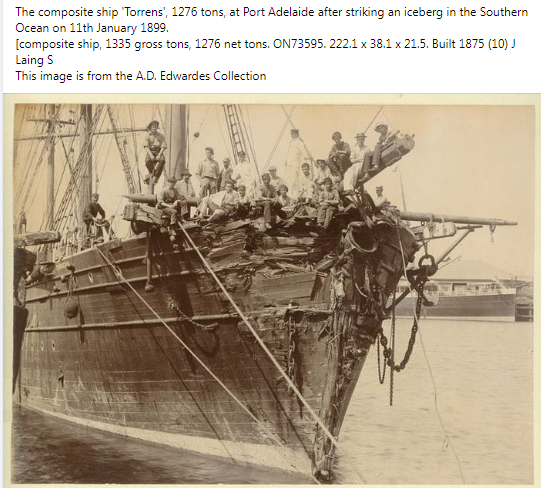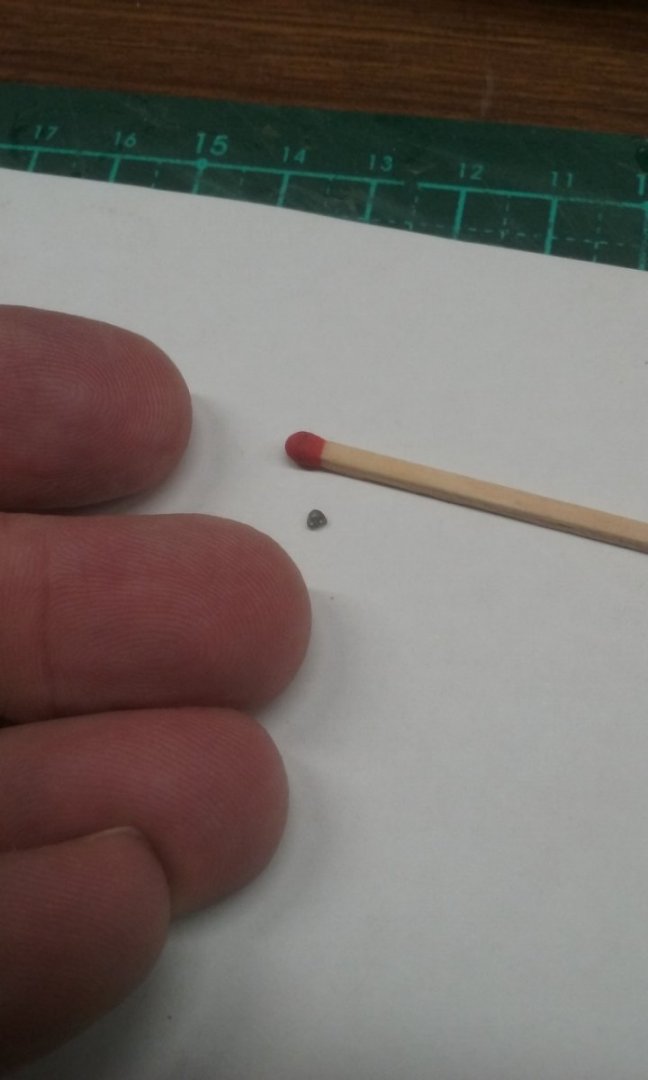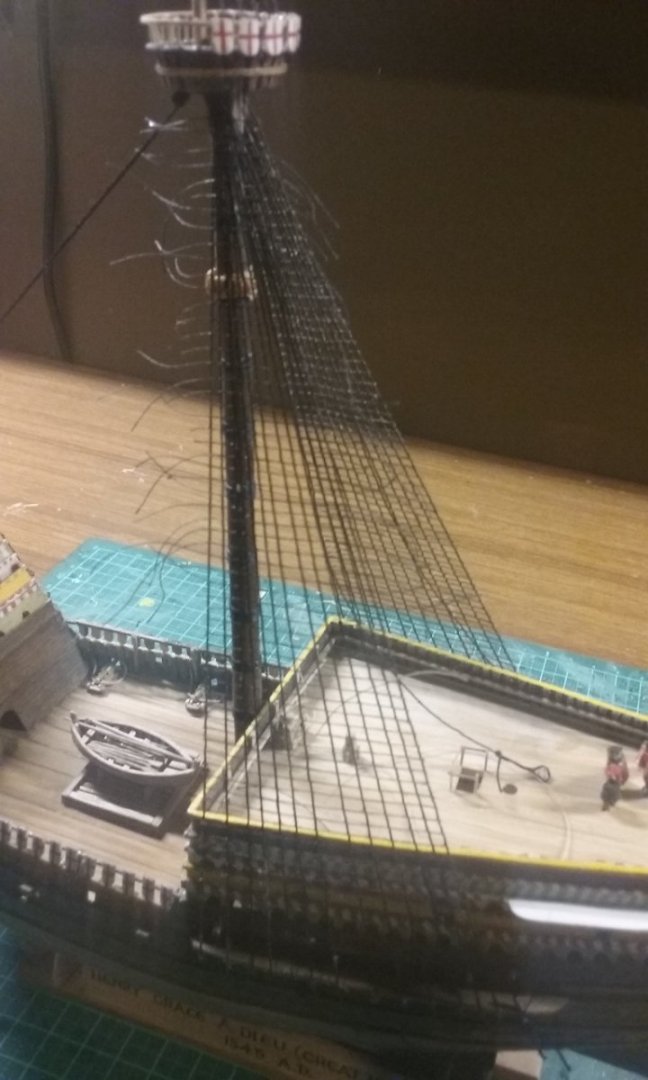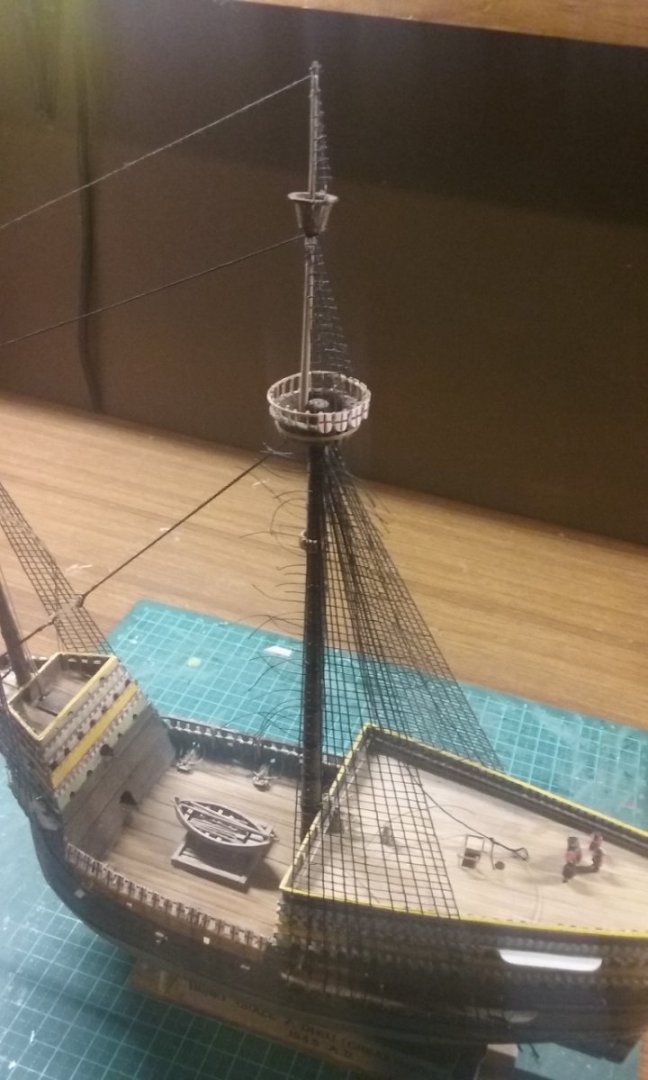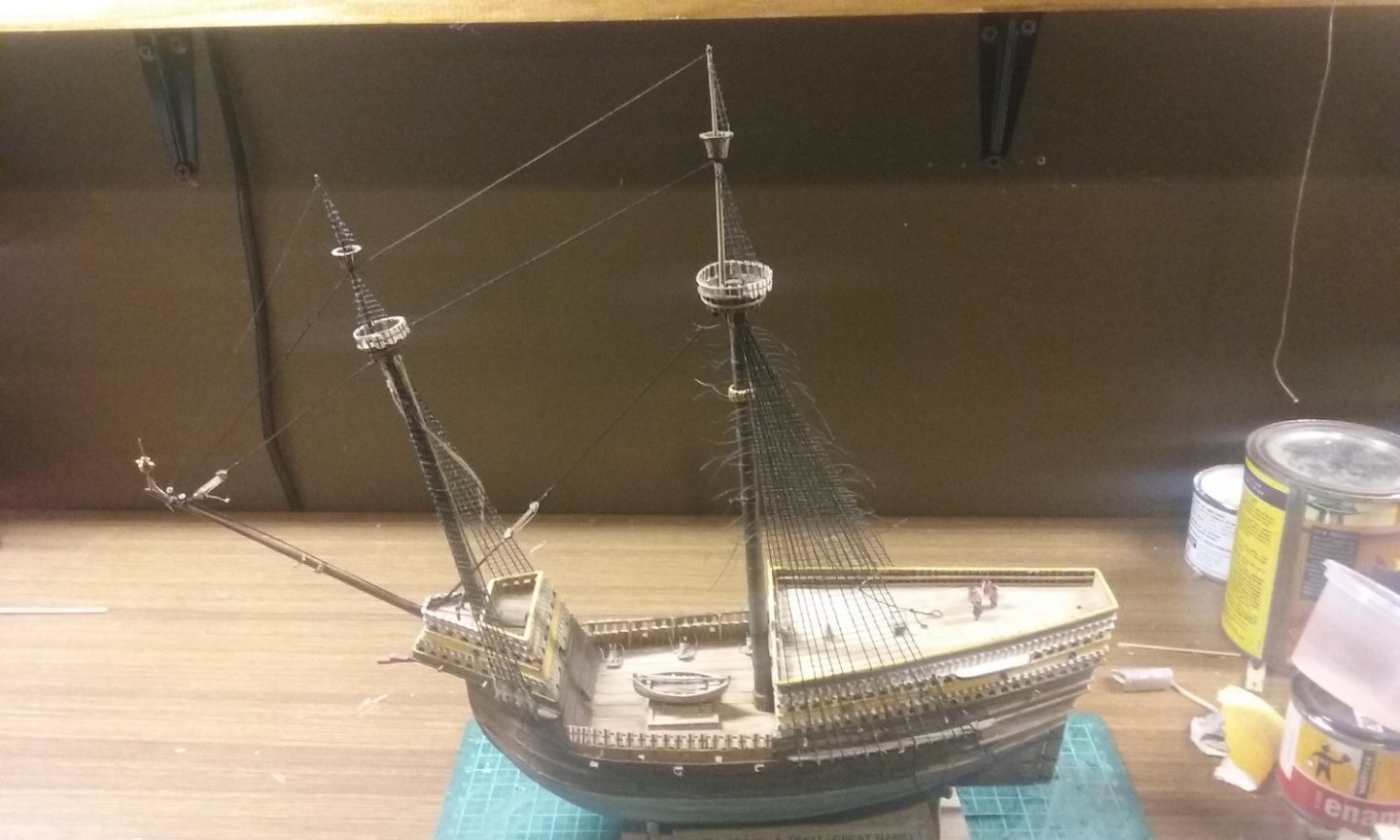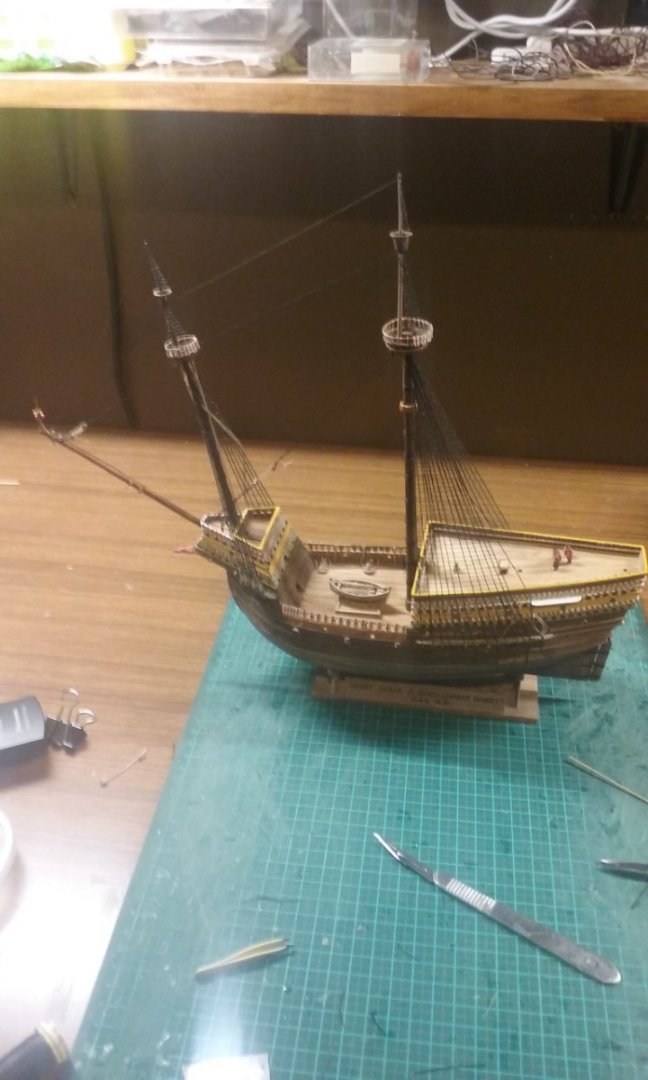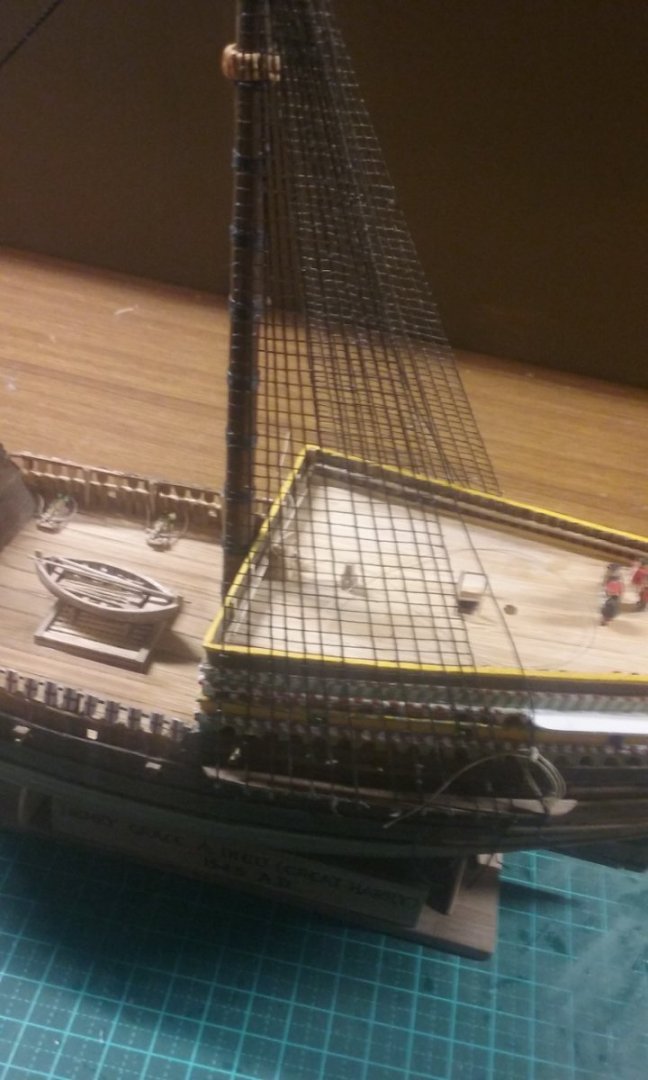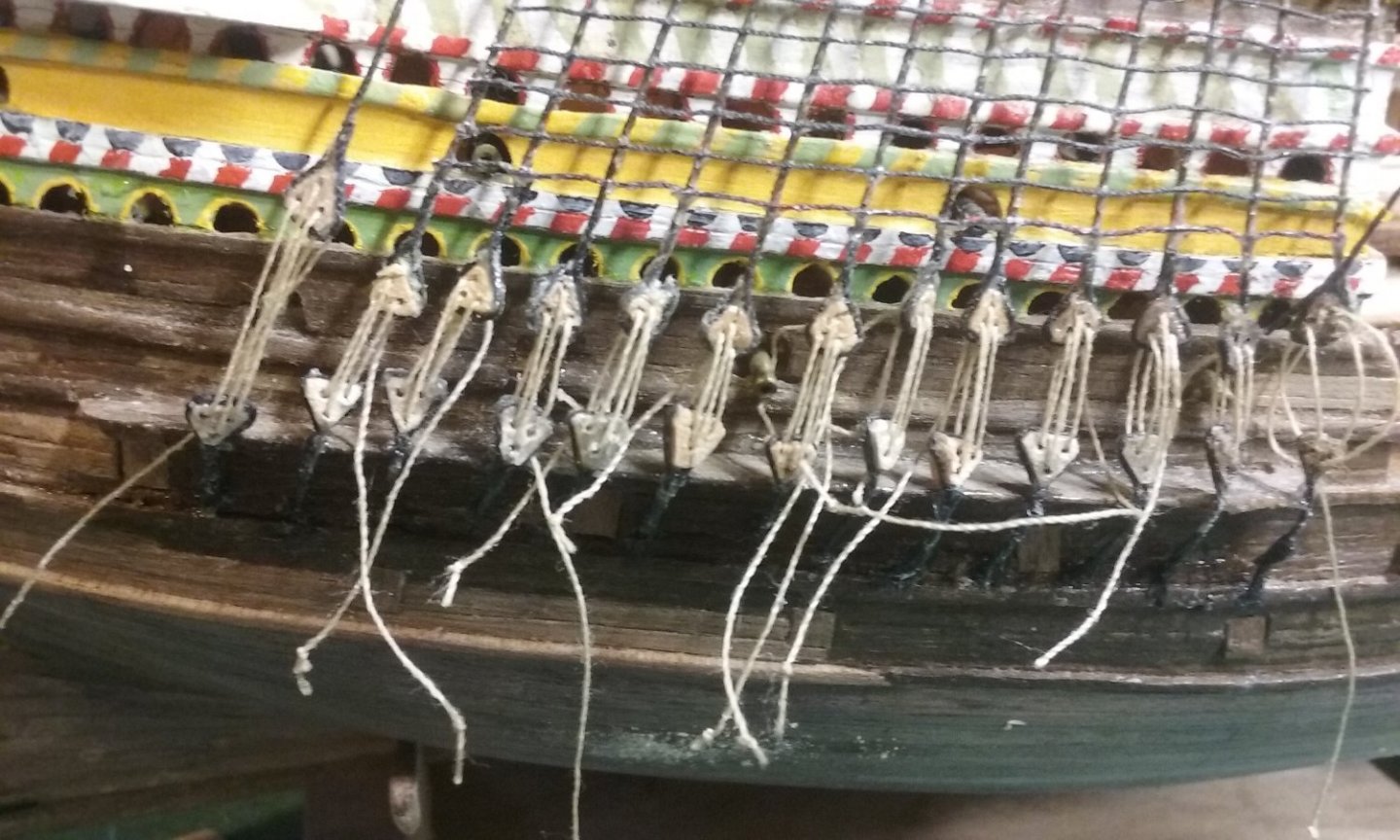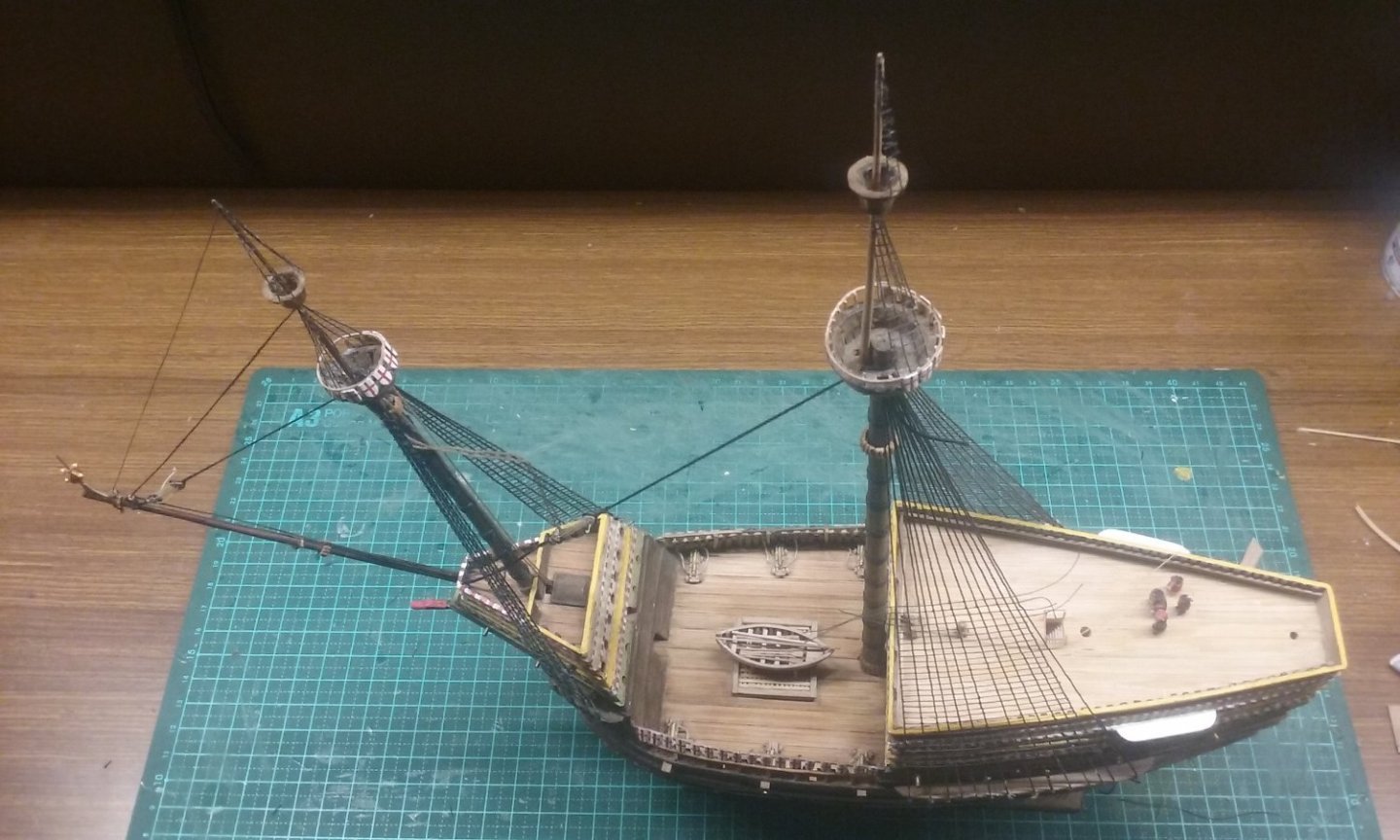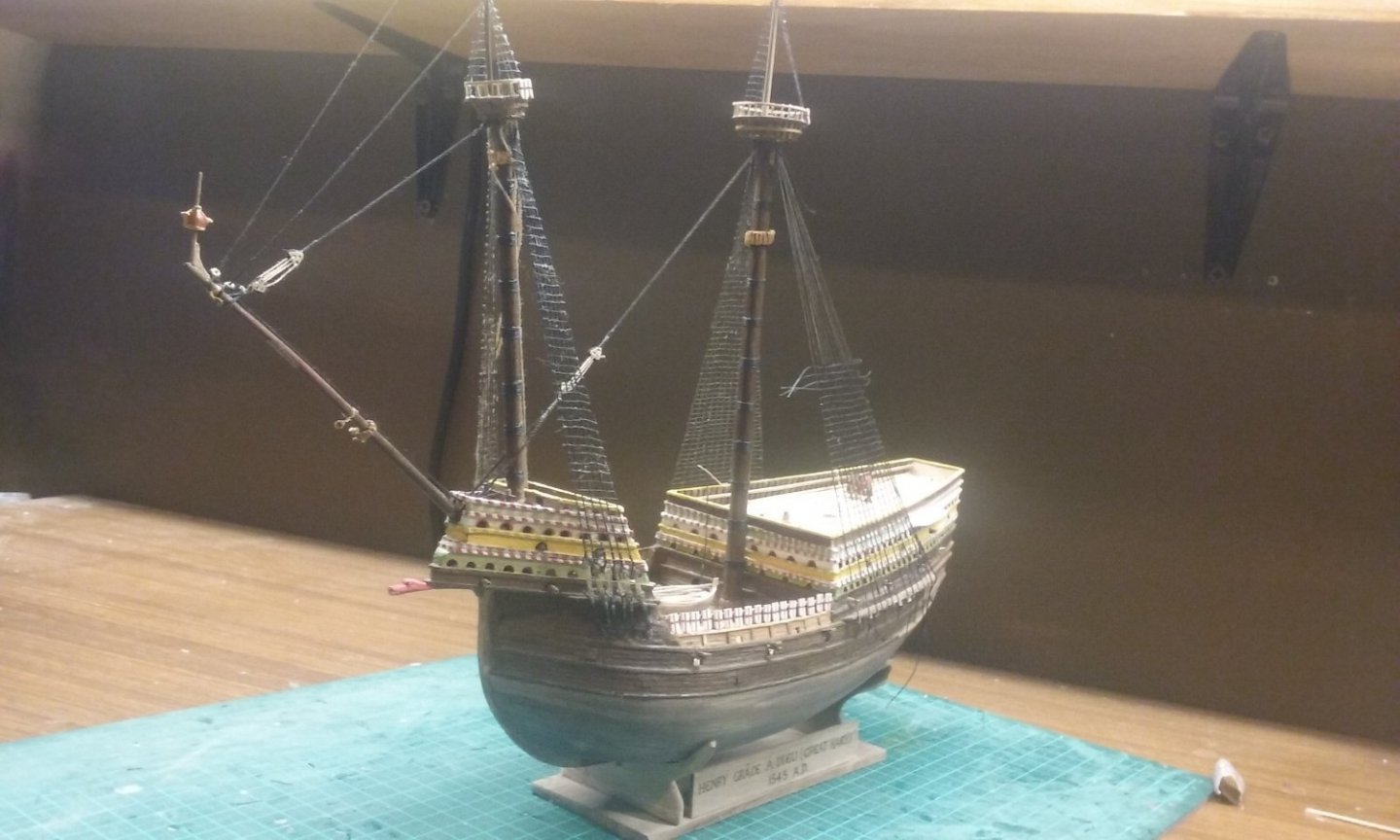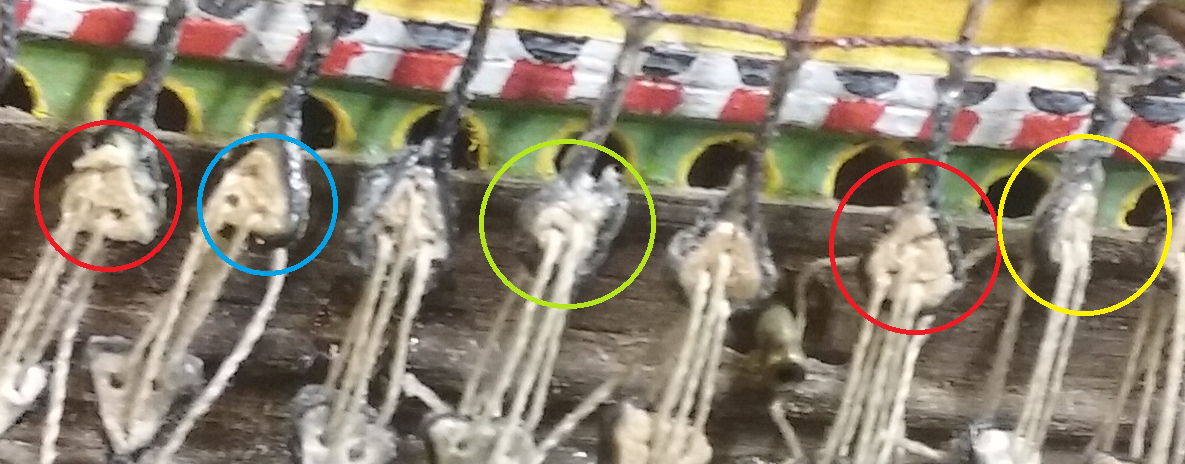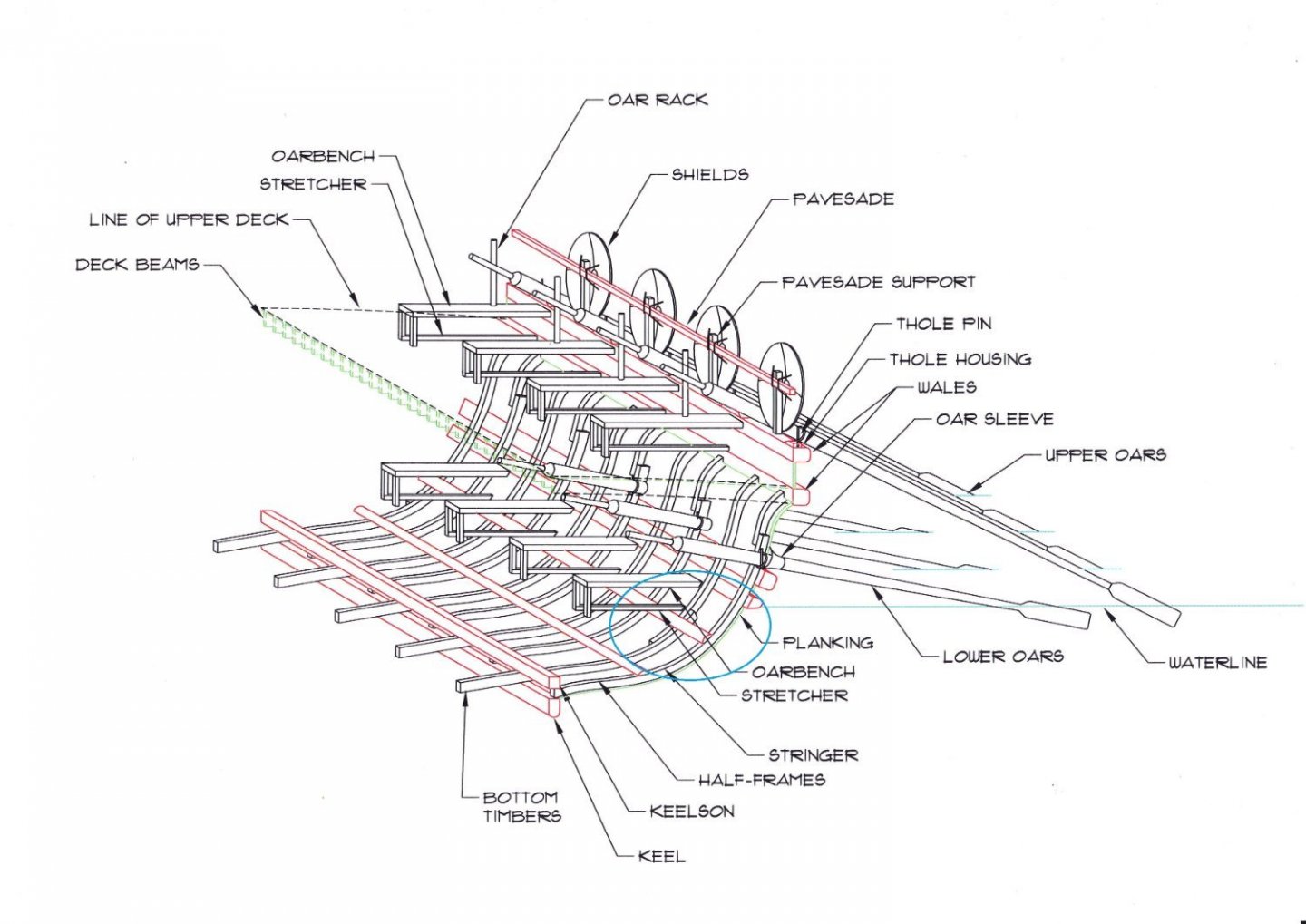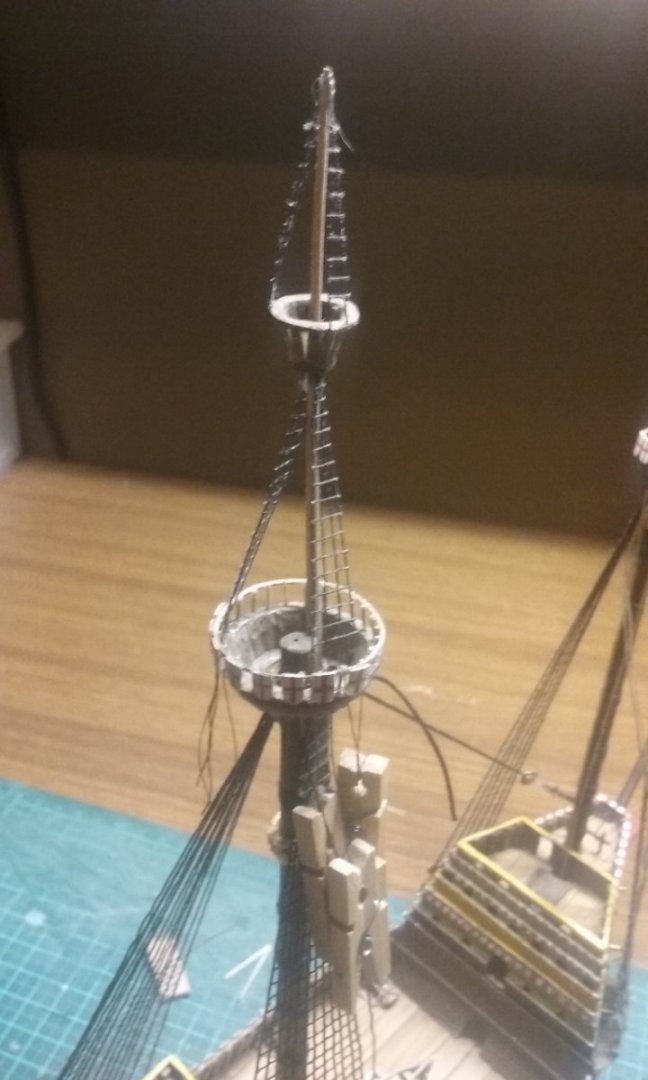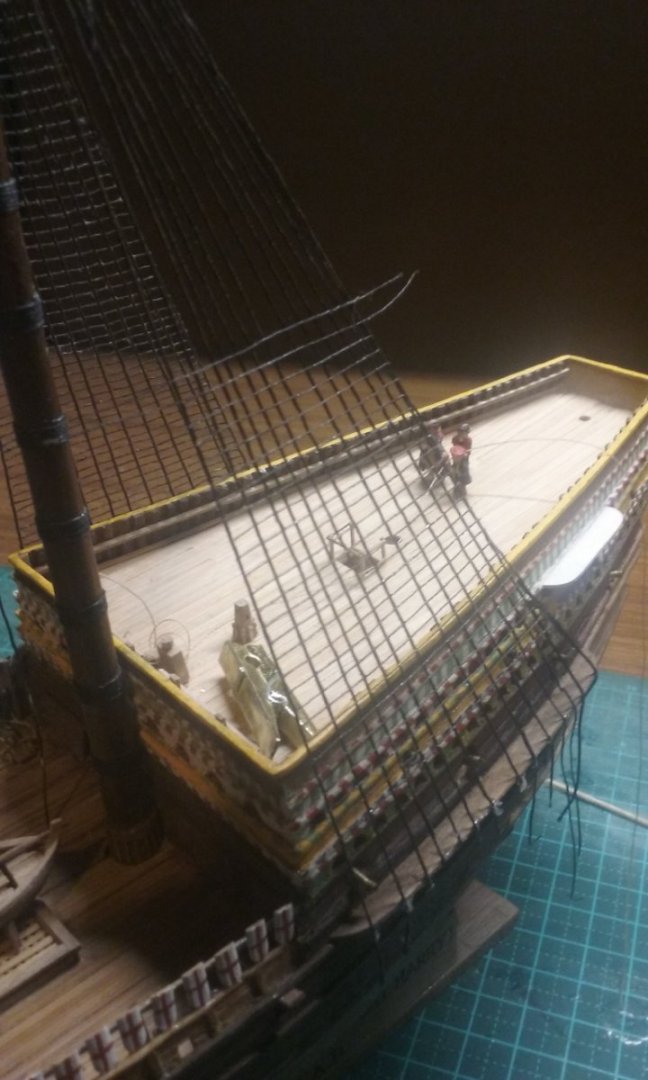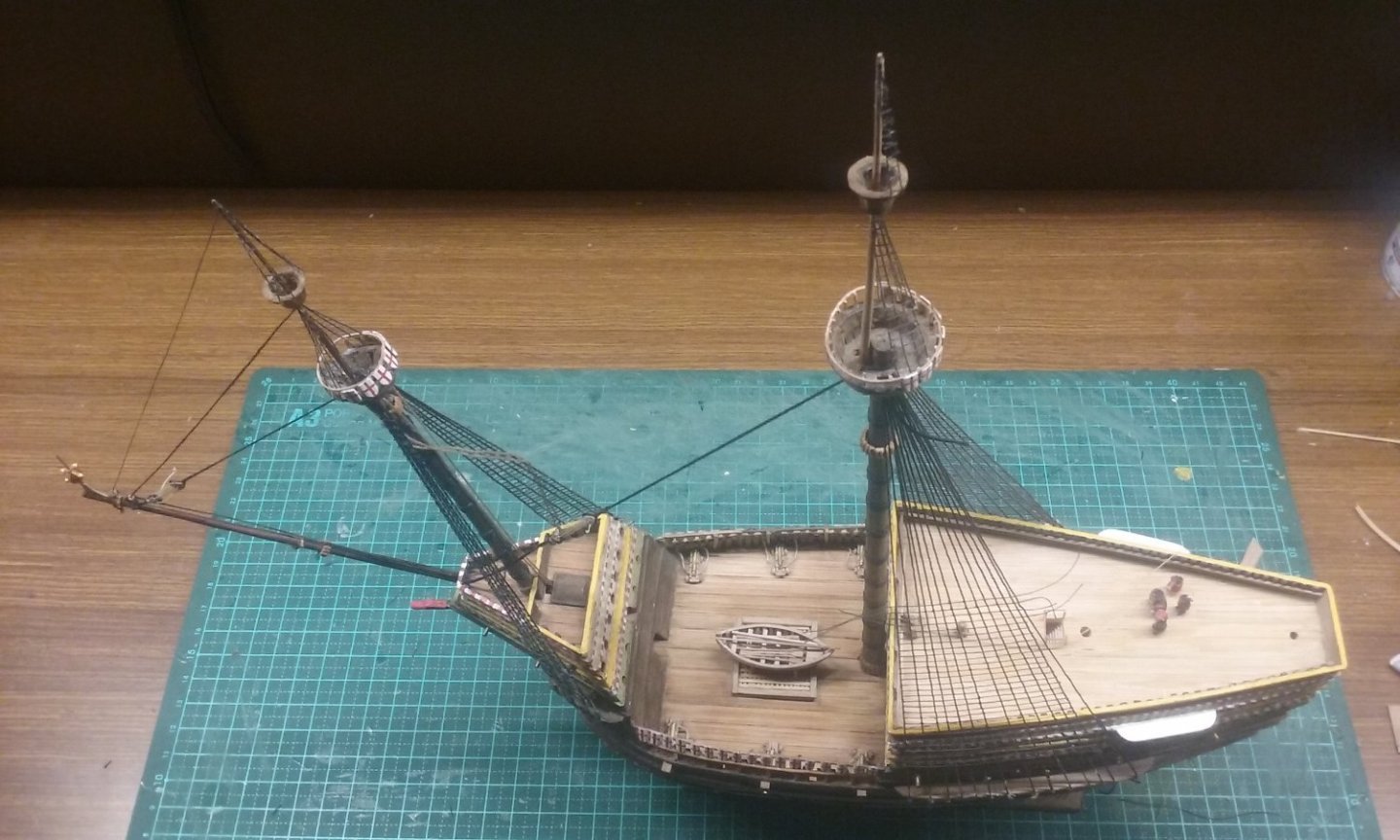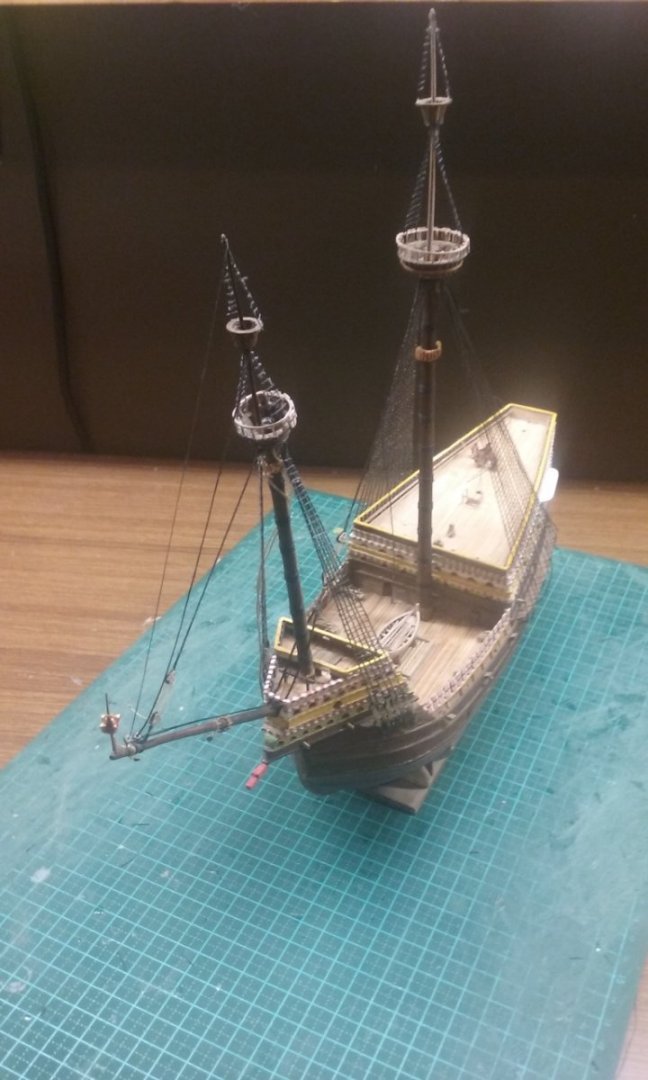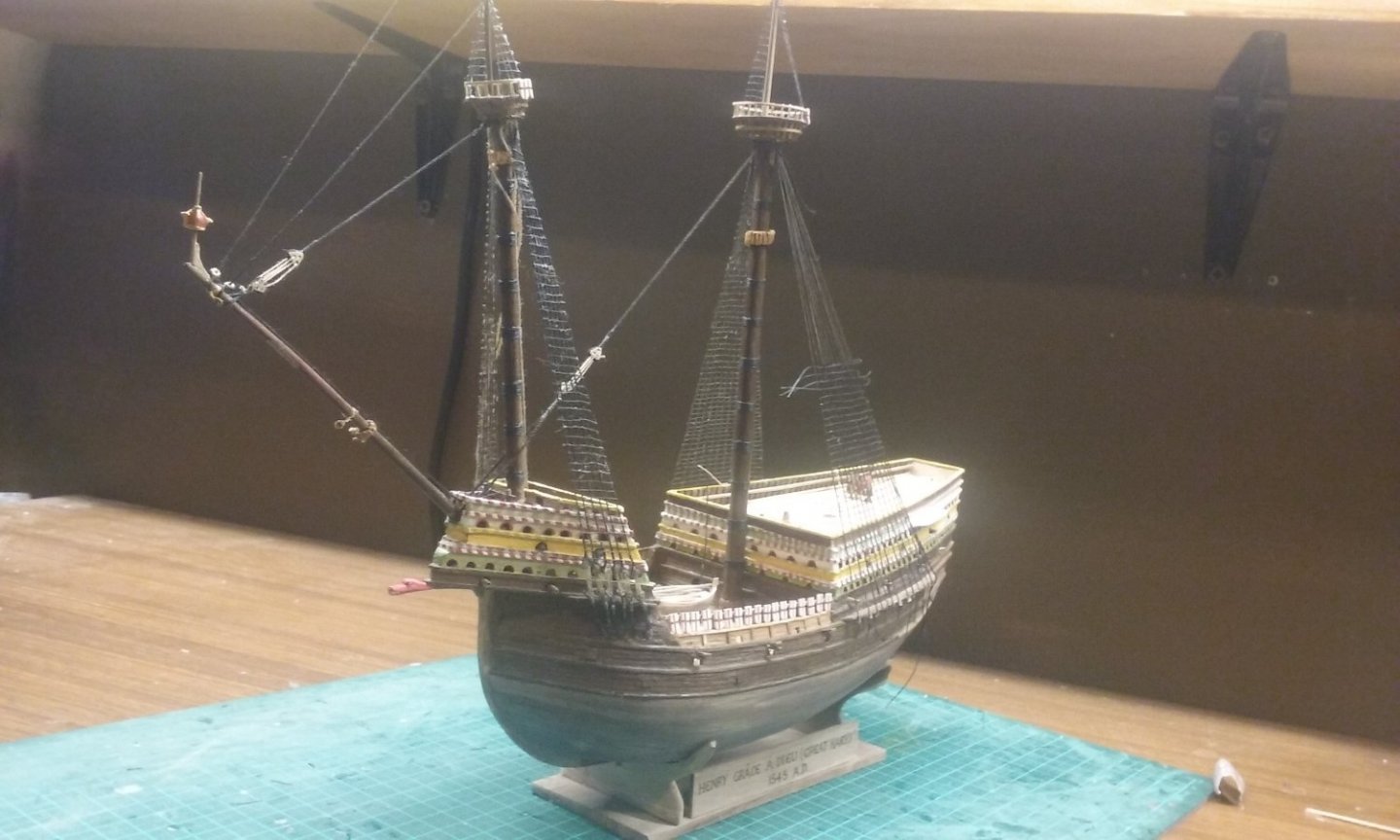-
Posts
7,987 -
Joined
-
Last visited
Content Type
Profiles
Forums
Gallery
Events
Everything posted by Louie da fly
-
Brilliant as always, Greg. I'd like to sit at your feet as you weather your models - amazing! Steven
- 35 replies
-

Naval History On This Day, Any Nation
Louie da fly replied to Kevin's topic in Nautical/Naval History
-
I totally agree. Not only henry, but over the years I have had so much generous unselfish help from many MSW members which has been invaluable to me. This is a pretty special forum. Steven
- 740 replies
-
- Tudor
- restoration
-
(and 4 more)
Tagged with:
-
Thanks everybody for the suggestions. Fortunately it looks like @henrythestaffy is coming to the rescue by 3D printing a whole bunch of them for me. My heartfelt thanks, mate. And this is the reason I'm having so much trouble making the deadeyes out of natural materials: That deadeye is 2mm on each side. I haven't been able to make any myself that are smaller than 3mm. And keeping in mind that those three holes have to be big enough for cotton thread to fit through . . . Steven
- 740 replies
-
- Tudor
- restoration
-
(and 4 more)
Tagged with:
-
Just to answer a question several of you have asked, the grain orientation is up and down or side to side (depending on which way up the deadeye is), not front-to-back. I think that would be an even worse invitation for the wood to split. Steven
- 740 replies
-
- Tudor
- restoration
-
(and 4 more)
Tagged with:
-
Hi Keith, I tried that. Really not as satisfactory. Steven
- 740 replies
-
- Tudor
- restoration
-
(and 4 more)
Tagged with:
-
Thanks everybody for the reactions, and suggestions on how to fix it. Baker and Druxey, I really think that wood isn't capable of this kind of job - I don't have any boxwood so I don't know its grain would be fine enough, but I think it would be the only wood suitable - and maybe even that wouldn't work. I've tried pear wood and it splits as well. I've tried card impregnated with white glue and it works better, but still not really all that wonderful. Don't worry, I'm not going to do anything drastic until I have a better solution, but I really think the current deadeyes have to go. Liteflight, I've never heard of Paxolin. Where do you get it in Oz? I don't think the birch would work any better than what I'm using, but I have considered the hot needle method - just a matter of practicality; over 100 deadeyes each with 3 holes, without burning my fingers . . . Henrythestaffy, I'm sending you a PM. Thanks again, everyone. Steven
- 740 replies
-
- Tudor
- restoration
-
(and 4 more)
Tagged with:
-
That's coming together very nicely. Steven
- 77 replies
-
- Santa Maria
- Artesania Latina
-
(and 1 more)
Tagged with:
-
Yes, it's a fair bit of work and needs quite a bit of thought. I certainly don't regard myself as an expert (and I still make a lot of mistakes). But it does make a nicer looking model in the long run. And of course, experience is a great teacher. Steven
- 77 replies
-
- Santa Maria
- Artesania Latina
-
(and 1 more)
Tagged with:
-
Some good news and bad news. First the good news; I've finished adding the ratlines on the larboard main shrouds. In progress: All ratlines in place but before trimming After trimming Now the bad news - the main starboard deadeyes really aren't working. They're all over the place, some of the deadeyes themselves have broken (red circles below - they're made of wood), they're different sizes, different distances apart, some twisted (yellow circle), the holes have pulled through so the lanyards terminate in the wrong places (blue circle) - and I have no idea what happened in the green circle. Add to that the fact that some of the lanyards got glued into the holes so I couldn't pull them tight. Gak! I think I really need to re-examine all of these, probably rip them all off and start again doing it differently. I've started experimenting, but not having a lot of success so far. Steven
- 740 replies
-
- Tudor
- restoration
-
(and 4 more)
Tagged with:
-
Hi Masa, your first planking has turned out very nicely, and the sanding has produced a nice smooth shape. But it might be worth knowing that the planking method (which I think is per Artesania Latina's instructions) isn't how it was done in the real world. There are some planking tutorials here: which show how it was done on real ships. At this stage, as you've got a very nice hull shape from your first planking, you have an opportunity to do your second planking more realistically if you choose to do so. It does take more work, but in my opinion the end result is worth it. However, this is your model, and it's your decision. Either way, you'll have a very nice looking model. Steven
- 77 replies
-
- Santa Maria
- Artesania Latina
-
(and 1 more)
Tagged with:
-
Good to see, mate. I'd thought of doing a Sophie myself at one point but never got around to it. There's a wealth of information about her in Master and Commander as I'm sure you already know. Good to see you've got it happening.
- 341 replies
-
- Sophie
- Vanguard Models
-
(and 1 more)
Tagged with:
-
Just be aware that I changed my mind about the frame construction partway through, and started making them a completely different way - see post #158 and #166 in my build log. The hefty through-beams and the deck-beams help keep the hull shape, compensating for the weaker construction method, as you can see in post #171. You could probably assemble each of your frames as a unit consisting of the floor-timber, the futtocks and the deck-beam, which would add to the rigidity of its construction (strictly, the deck-beams should rest on the beam shelf, but all of that would be covered by the deck anyway, so it would be invisible). Keep in mind that these ships almost certainly were built planking-first, not frame-first - the planking was put together then the frames were added. Frame-first construction was a later development. But unless you've got your wits about you, plank-first construction has a tendency to "squeeze" inwards resulting in a narrower vessel. There's nothing to stop you building yours frame-first - in fact there's a lot to be said for it, for consistency and symmetry and getting the hull-shape right. Steven
-
Thanks for the comment, Roger, and to everyone for the likes. I just looked at the date on the first page of this log. It's taken me over 6 years to get to this stage (though on further inspection it appears I had a gap of two and a half years where I did nothing on it. Don't feel quite so bad about it . . .) Steven
- 740 replies
-
- Tudor
- restoration
-
(and 4 more)
Tagged with:
-
I'd second Druxey's advice. It'll save you a lot of grief down the line. If you have a look at the archaeology, you'll find that the frames at this time were usually not continuous, but instead made of several separate futtocks, often set side by side and overlapping rather than being joined in one continuous line, as in this diagram of a dromon's framing (circled in blue) and a different layout but with similar characteristics from the knarr Skuldelev 1 Steven
-
- 740 replies
-
- Tudor
- restoration
-
(and 4 more)
Tagged with:
-
Very clean work, Mr Pleasant. Looking very good. This is going to be a very attractive model. Steven
- 50 replies
-
- mary rose
- caldercraft
-
(and 1 more)
Tagged with:
-
Looks like a really good subject for a build. I've always liked the look of HMAS Australia (II) and she has a distinguished service record. Are you going to paint her in dazzle patterns? I hope you don't mind me adding this link which I believe is a good summary of her life and achievements - https://www.navy.gov.au/hmas-australia-ii Steven
- 88 replies
-
- Australia II
- Finished
-
(and 2 more)
Tagged with:
About us
Modelshipworld - Advancing Ship Modeling through Research
SSL Secured
Your security is important for us so this Website is SSL-Secured
NRG Mailing Address
Nautical Research Guild
237 South Lincoln Street
Westmont IL, 60559-1917
Model Ship World ® and the MSW logo are Registered Trademarks, and belong to the Nautical Research Guild (United States Patent and Trademark Office: No. 6,929,264 & No. 6,929,274, registered Dec. 20, 2022)
Helpful Links
About the NRG
If you enjoy building ship models that are historically accurate as well as beautiful, then The Nautical Research Guild (NRG) is just right for you.
The Guild is a non-profit educational organization whose mission is to “Advance Ship Modeling Through Research”. We provide support to our members in their efforts to raise the quality of their model ships.
The Nautical Research Guild has published our world-renowned quarterly magazine, The Nautical Research Journal, since 1955. The pages of the Journal are full of articles by accomplished ship modelers who show you how they create those exquisite details on their models, and by maritime historians who show you the correct details to build. The Journal is available in both print and digital editions. Go to the NRG web site (www.thenrg.org) to download a complimentary digital copy of the Journal. The NRG also publishes plan sets, books and compilations of back issues of the Journal and the former Ships in Scale and Model Ship Builder magazines.




